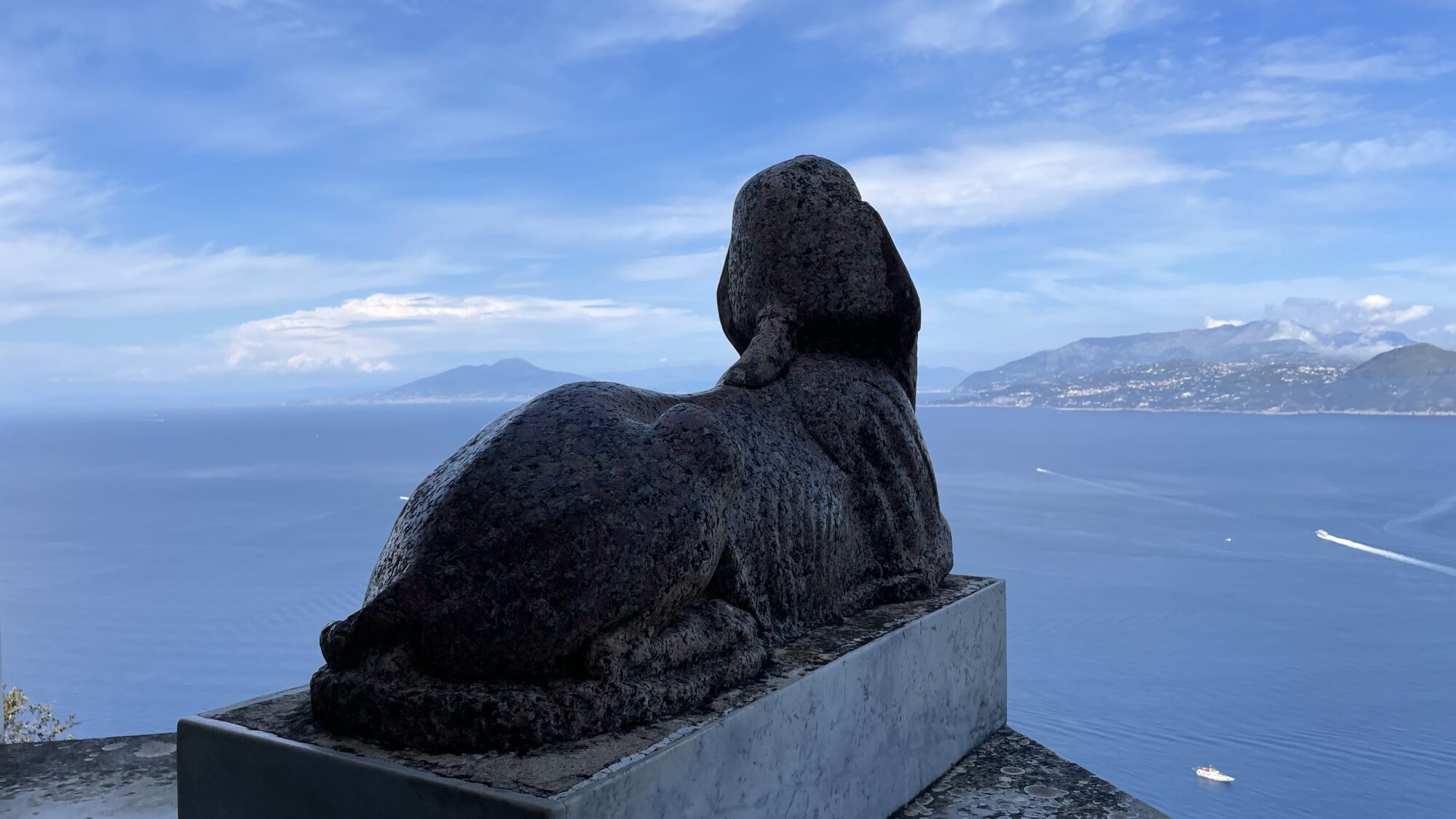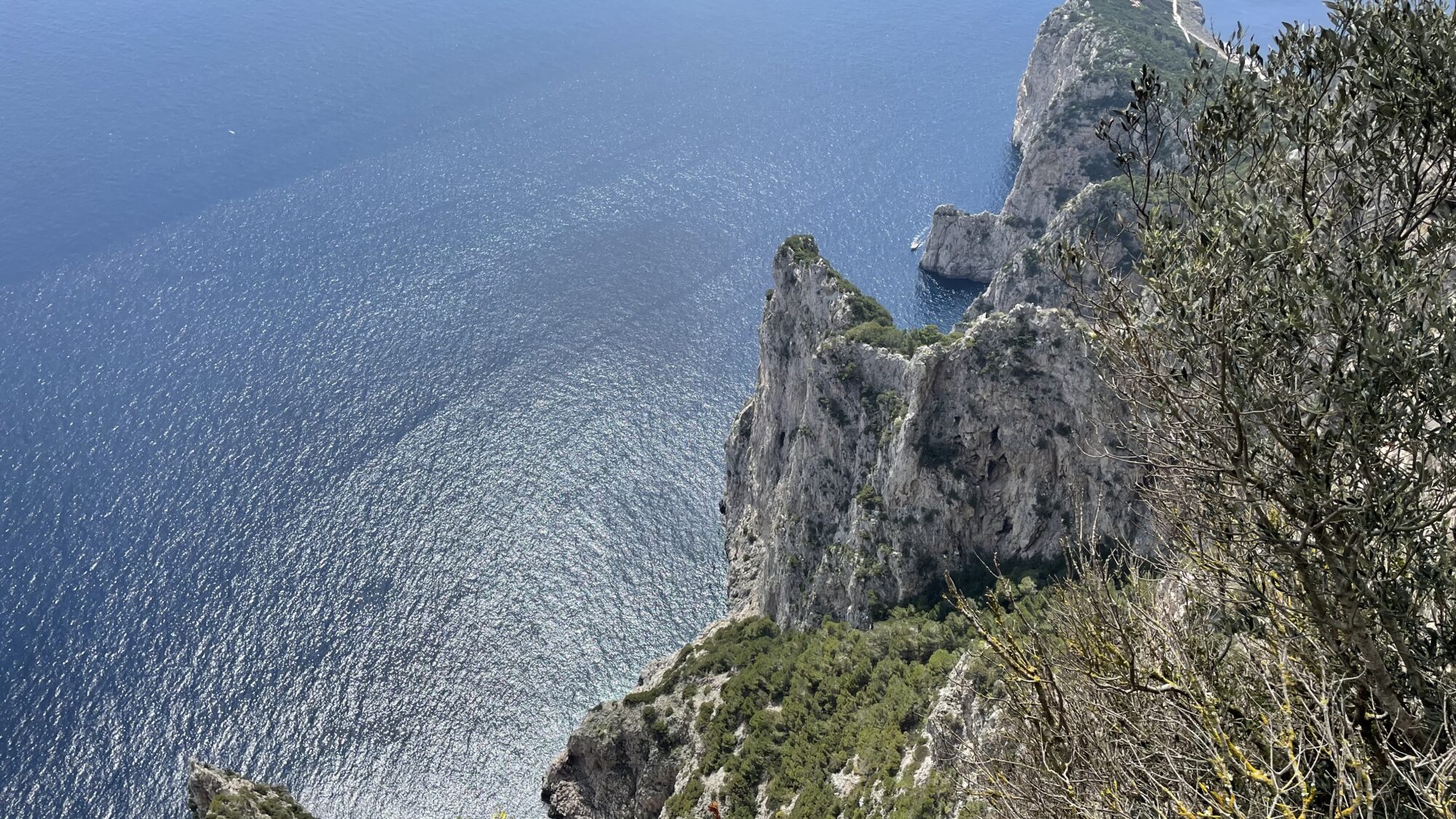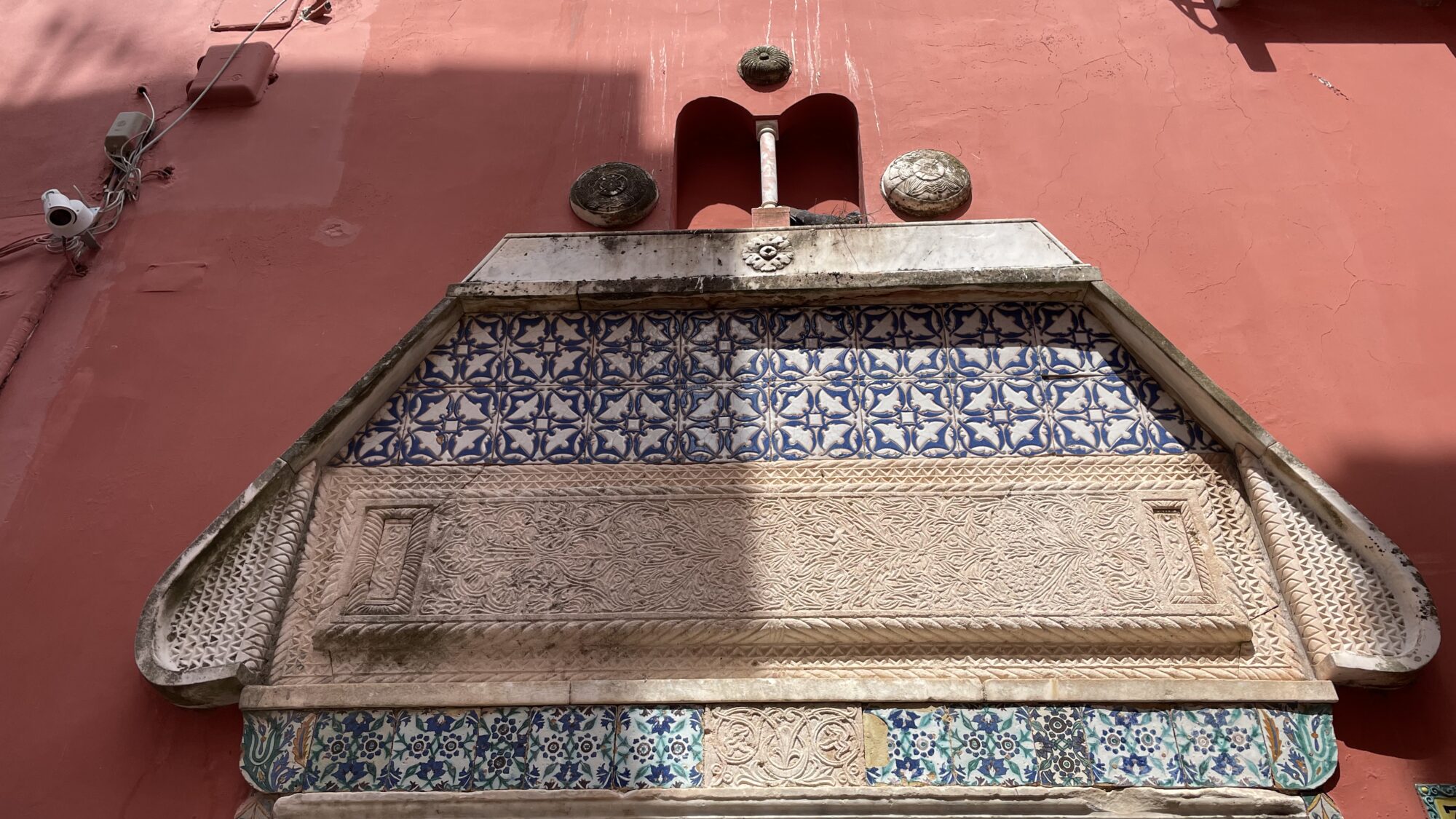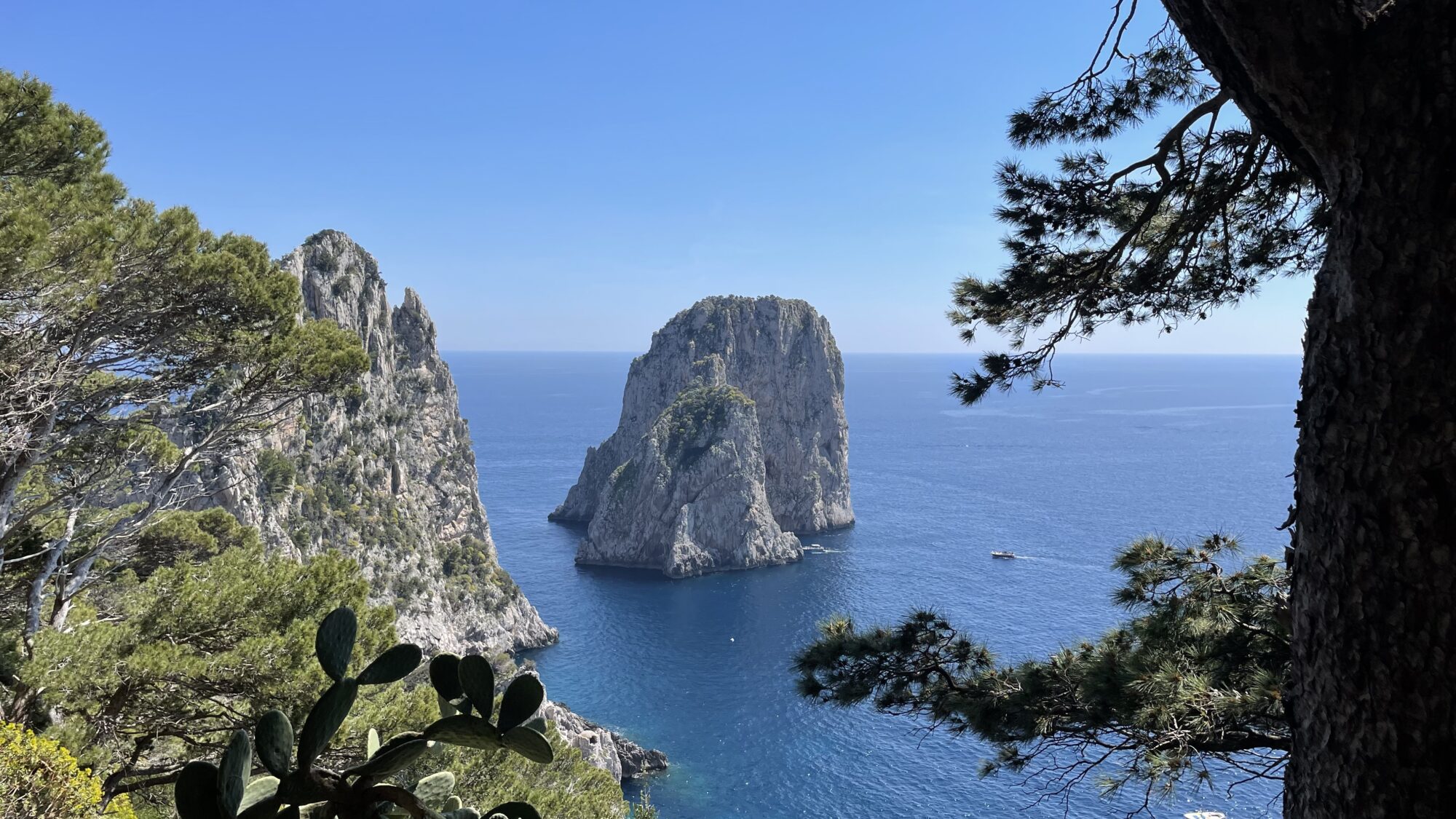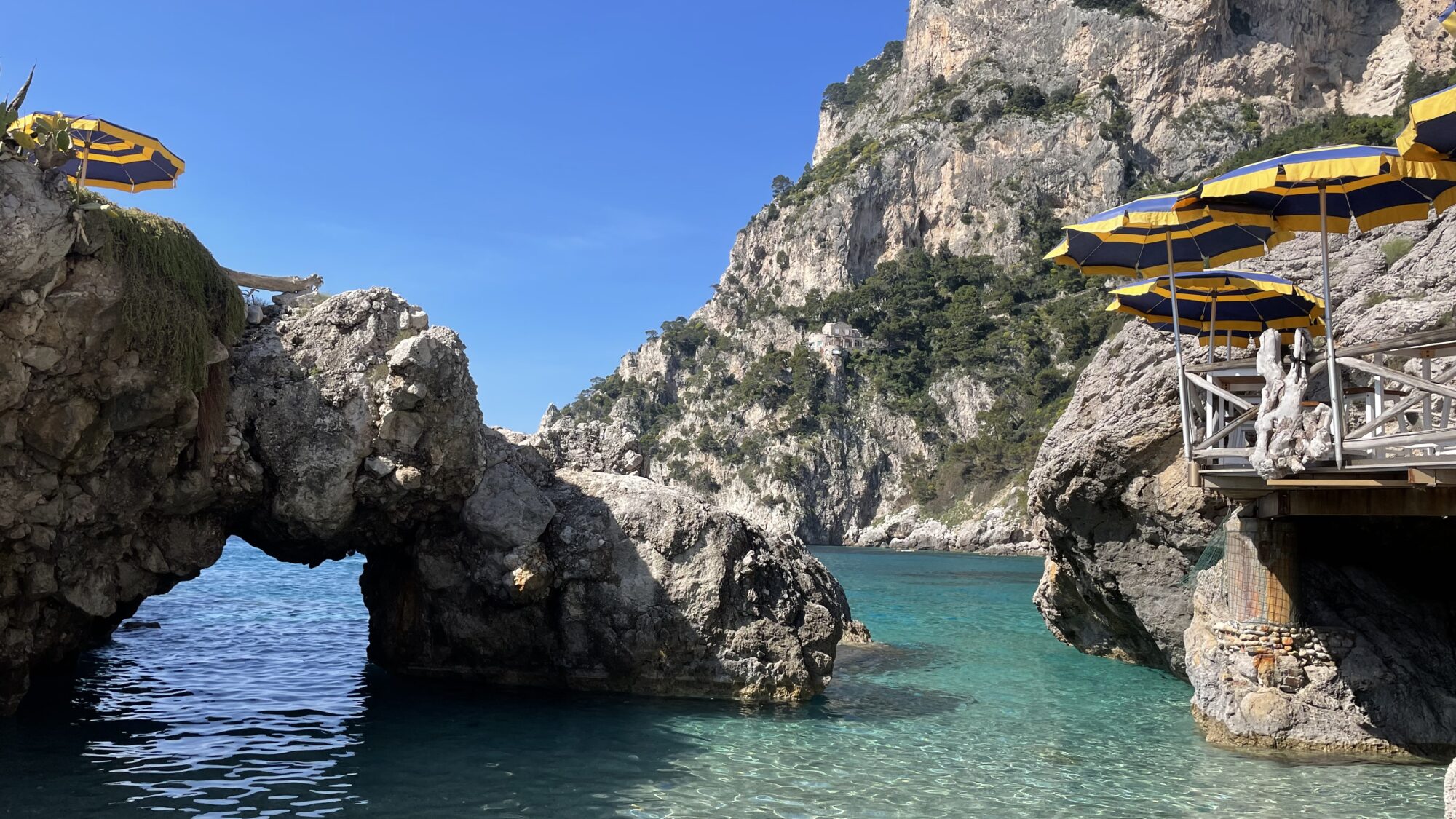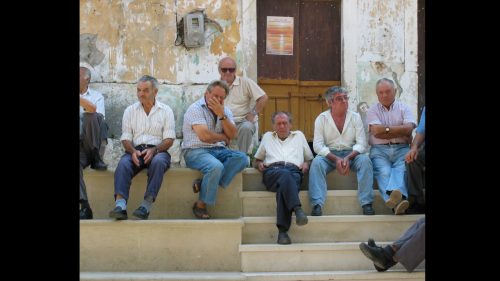Where the Sirens Sing
There is a cluster of islands, right off the coast of Naples, that look like pebbles scattered in the sea by the hand of a giant. Some are big, some tiny, some just deserted rocks: Capri, Ischia, Procida, Li Galli (also called Le Sirenuse), Vivara, and many more… As myth has it, this is the bay where the sirens sang: if you’ve ever been to this latitude, you could see why you might feel under a spell once you set foot on their shores.
Among them, Capri’s magnificent coastline has for millennia attracted hordes from all walks of life, looking for a quiet hideout, concealed by deep blue sea, and luscious vegetation.
This is the island of goats and glitterati, of outcasts and literati, of eccentrics and refugees, of emperors and fishermen, of politicians and artists; where a sphinx, guarding the bay of Naples, keeps in her granite gaze all the wishes whispered behind her back (yes, she can hear you, so careful what you wish for).
This is the place where wild spirits and daring architecture find their natural habitat: from Casa Malaparte, a beautiful villa, which looks like it’s jutting out of the rock, about to take a dive into the sea; to Villa Monacone, where Monika Mann, the daughter of writer Thomas Mann, and fisherman Antonio Spadaro lived their whole life, happily in love. Frances Scott Fitzgerald, his wife Zelda, and their daughter “Scottie” spent months at what is today the Capri Tiberio Palace; “The Great Gatsby” was finished there.
Emperor Augustus often travelled to Capri, which he referred to as Apragopolis, or the city of doing nothing – the epitome of the “dolce far niente”. His successor, Emperor Tiberius, a tragic figure, made the island his refuge, where he spent 11 years of his life. He allegedly had twelve homes here, but Villa Jovis was the biggest and most lavish. As you stroll through its ruins, perched atop a promontory, granting breathtaking views over the bay and surrounding islands, you can certainly grasp and feel how this was a place of luxurious yet contemplative otium. And if we are to trust historian-satirist Suetonius, Tiberius spent quite some time asking his court scholars ‘what would the Sirens have sung to Ulysses’.
On the opposite side of the island, in the town of Anacapri, a visionary Swedish physician, and a man of paradoxes, Axel Munthe, built one of the most stunning villas in Europe, Villa San Michele. He first came to Capri in 1876, when he was just 19, and after climbing the Phoenician Steps – 921 steps that lead from the port of Marina Grande up to the village of Anacapri – he was struck by the beauty of the place, and right then and there decided this was where he’d build his home. Twenty years later, he started to turn his dream into reality.
“I want my house open to the sun and wind and the voice of the sea, like a Greek temple, and light, light, light everywhere,” he wrote in his memoir. And indeed this he did, mixing Greek influences, with Roman, Etruscan and Egyptian artifacts, and surrounding it all with flowers and rare plants. And sure enough, he did hear the voice of the sea, loud and clear. In the same book, he also confessed how he believed he was visited by “a phantom from the unseen,” which introduced itself as an omniscient “immortal spirit of the place,” for whom time had no meaning since it knew everything, past and future. It whispered, in a melodious voice: “It shall all be yours […] the chapel, the garden, the house, the mountain with the castle, if you’re willing to pay the price.”
Who was this ephemeral creature, who mellifluously lured him into a Faustian bargain? Was it a siren disguised under a cloak? We’ll never know. But it’s quite the foundation myth, especially as the provenance of some of the pieces in his vast art collection was never fully disclosed. Among them is the ancient Egyptian all-knowing granite sphinx that dominates the little chapel overlooking the bay, which, funnily enough, has become the symbol of Villa San Michele.
The power of these mythical figures – half women, half animals – is strong in Capri.
Capri is the island where philosophical dreams mix with ambitious yet practical and aesthetically pleasing solutions to personal issues. At the beginning of the 20th century, German industrialist Friedrich Alfred Krupp had a steep, paved footpath, consisting of a series of hairpin bends, carved onto the side of the mountain’s calcareous rock, connecting the hotel where he was staying, the Quisisana, with Marina Piccola, 100 metres below, where his research vessel was moored. Legend has it that he had Via Krupp made as a shortcut to the port. Some say that he also ostensibly used it to reach the Grotta di Fra Felice, a grotto carved in the 1600s, that he had bought and restored as a place to host parties with friends (scandalmongers say orgies), which was wiped away in 2009 in a landslide.
In Capri, grottoes hide colours of all shades: blue – the most famous one – but also white, green, red. Some served as storage for weapons, others as shelters for fishermen caught in a storm. Many hide secrets.
There’s the one where the myth of mithra and the cult of the Mater Magna merged in antiquity, and was used more recently for pagan re-enactments, with attendees wearing Ancient Roman costumes and performing mock sacrifices. In recent years, it has hosted limited-access concerts at sunrise. And then there’s the so-called obscure grotto, allegedly the biggest and most beautiful of them all, if we can believe the historical sources: a landslide in 1808 made it inaccessible and untraceable. In a word, lost.
The name “Capri” often brings to mind stories of scandal and drama – it has been written that its rocks provide “exclusive balconies for elegant suicides” – but Capri historically has also been the playground of international minds, the paradise of revolutionaries (Lenin spent time here too), and of visionary poets. The locals, of course, have seen it all, so they proudly maintain an unfazed attitude, no matter what, and that’s part of the charm of the place. Capri is the island of paradoxes.
While it might have lost the magnetic aura as a cultural centre it once had, Capri has retained its reputation as a place of bliss: it still acts as a corner of paradise for all the Ulysses of the world, who are pulled to this mysterious land by the sirens’ lyrical and destabilizing promise of eternal happiness.
Luisa has a thing for islands. If you do too, but you’re afraid of the sirens’ spell, she can be your Circe and help you return home, and turn you into a pig at the same time as well.

